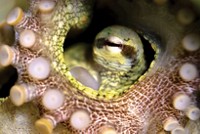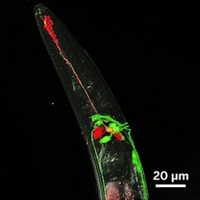Advertisement
Grab your lab coat. Let's get started
Welcome!
Welcome!
Create an account below to get 6 C&EN articles per month, receive newsletters and more - all free.
It seems this is your first time logging in online. Please enter the following information to continue.
As an ACS member you automatically get access to this site. All we need is few more details to create your reading experience.
Not you? Sign in with a different account.
Not you? Sign in with a different account.
ERROR 1
ERROR 1
ERROR 2
ERROR 2
ERROR 2
ERROR 2
ERROR 2
Password and Confirm password must match.
If you have an ACS member number, please enter it here so we can link this account to your membership. (optional)
ERROR 2
ACS values your privacy. By submitting your information, you are gaining access to C&EN and subscribing to our weekly newsletter. We use the information you provide to make your reading experience better, and we will never sell your data to third party members.
Biological Chemistry
Fly Protein Tunes In To Water
Ion channel in fruit flies' taste neurons hints at how more advanced animals sense water
by Carmen Drahl
April 12, 2010
| A version of this story appeared in
Volume 88, Issue 15

A newly discovered ion channel protein that helps fruit flies sense water could help further understanding of how animals regulate water intake, an essential process for life. Insects and some mammals have water-responsive taste cells, and certain ion channels can respond to changes in solute concentrations, but the molecular basis of water detection by animals is still not clear.
Kristin Scott, a professor of genetics at the University of California, Berkeley, along with graduate student Peter Cameron and coworkers, identified a channel in taste neurons on the strawlike snout of fruit flies and showed that mutant flies lacking the channel, called PPK28, drink less frequently because they cannot sense their water status (Nature, DOI: 10.1038/nature09011). Expressing the channel in other cells conferred water sensitivity to them as well.
The channel, which belongs to a family different from that of previously known water-regulatory channels, opens and admits water when solute concentration outside cells decreases. Bacteria respond similarly to changes in external solute concentrations, explains Ian R. Booth of the University of Aberdeen, in Scotland, who studies mechanosensitive channels.
Scott's work raises interesting questions about whether animals can truly taste water and, if so, by what mechanism, adds Wolfgang Liedtke of Duke University, who works on functionally related but molecularly distinct protein channels.





Join the conversation
Contact the reporter
Submit a Letter to the Editor for publication
Engage with us on Twitter